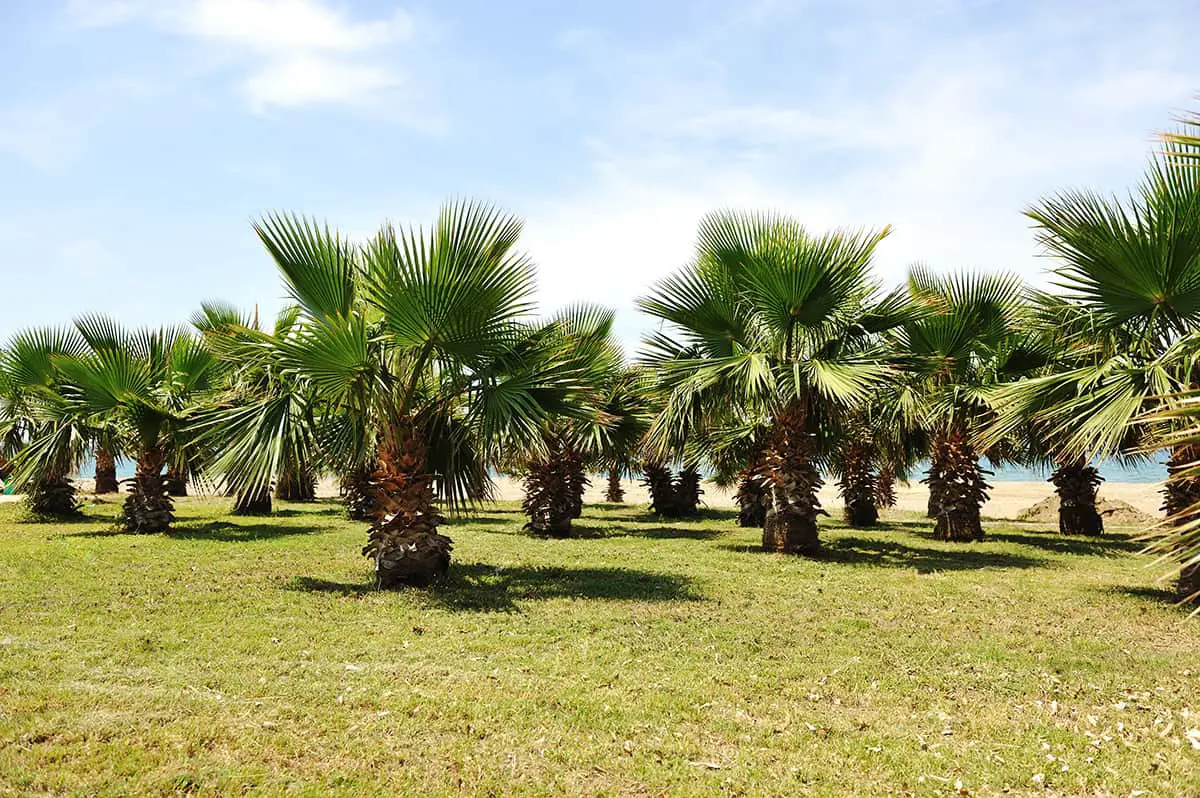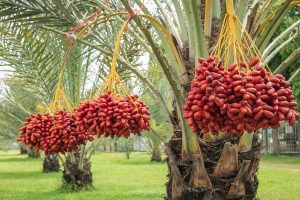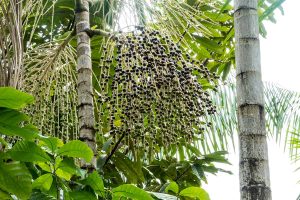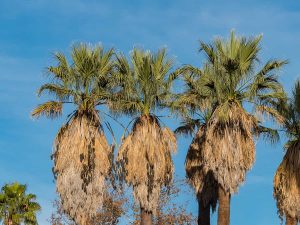Palm trees come in a broad range of sizes depending on their species and the conditions they are grown in. Small palm trees can have mature heights of just 6 feet when grown outside, while as houseplants, they can top out at just 1 foot tall. The tallest palm trees reach nearly 200 feet in height, though it’s more common for tall palms to extend to between 50 and 80 feet in height.
Here we explore some of the tallest and smallest palms in the world and look at popular palms according to their size.
Table of Contents
Palms According to Height
Palm trees vary enormously in height according to their species and their growing conditions. Palms grown outdoors or in their native habitat are much more likely to reach their maximum height expectancy, while indoor palms or those grown in pots will have considerably smaller mature height measurements.
Here we look at some of the most popular palms in the world, listed according to their height, from tallest to smallest.
Mexican Fan Palm

- Botanical name: Washingtonia robusta
- Common names: Mexican Fan Palm, Thread Palm, Sky Duster
- Plant family: Arecaceae
- USDA hardiness zone: 9 – 11
- Mature height: 80 feet
- Mature spread: 10 feet
The Mexican Fan Palm is not the tallest palm tree in the world, but it is one of the tallest when it comes to widely grown palms. Though most Mexican Fan Palms will top out at around 80 feet, it is not unusual for these trees to exceed 100 feet in height.
They are native to Mexico but they have been naturalized across much of the southern and western United States, as well as some of the more temperature countries in Europe.
Chilean Wine Palm
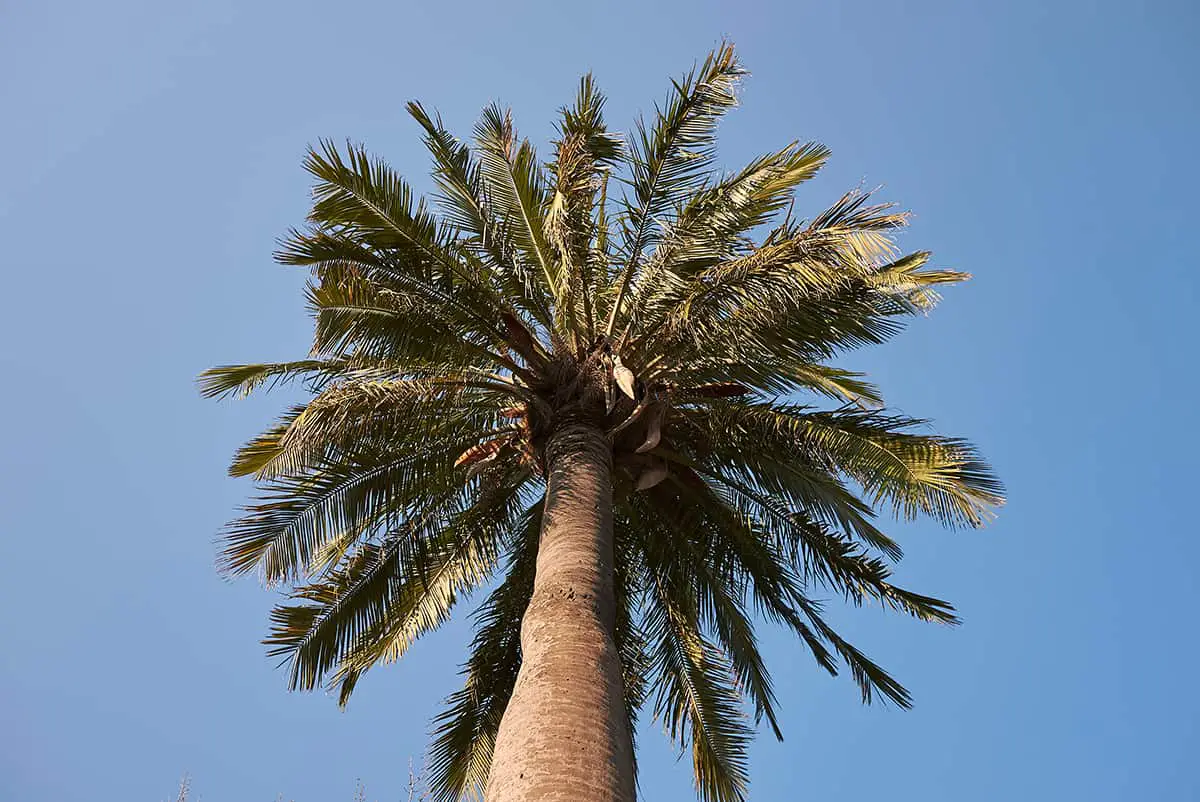
- Botanical name: Jubaea chilensis
- Common names: Chilean Wine Palm, Chile Coco Palm, Honey Palm, Palm Honey Tree
- Plant family: Arecaceae
- USDA hardiness zone: 8 – 11
- Mature height: 80 feet
- Mature spread: 25 feet
This is a tall palm tree typically reaching around 80 feet in height, but it is also well known for the size of its trunk. At around 3 feet in diameter, the trunk of the Chilean Wine Palm tree is the largest trunked palm tree in existence. It is very slow growing and can take decades to reach its eventual height, though it will live for several hundred years.
Bismarck Palm
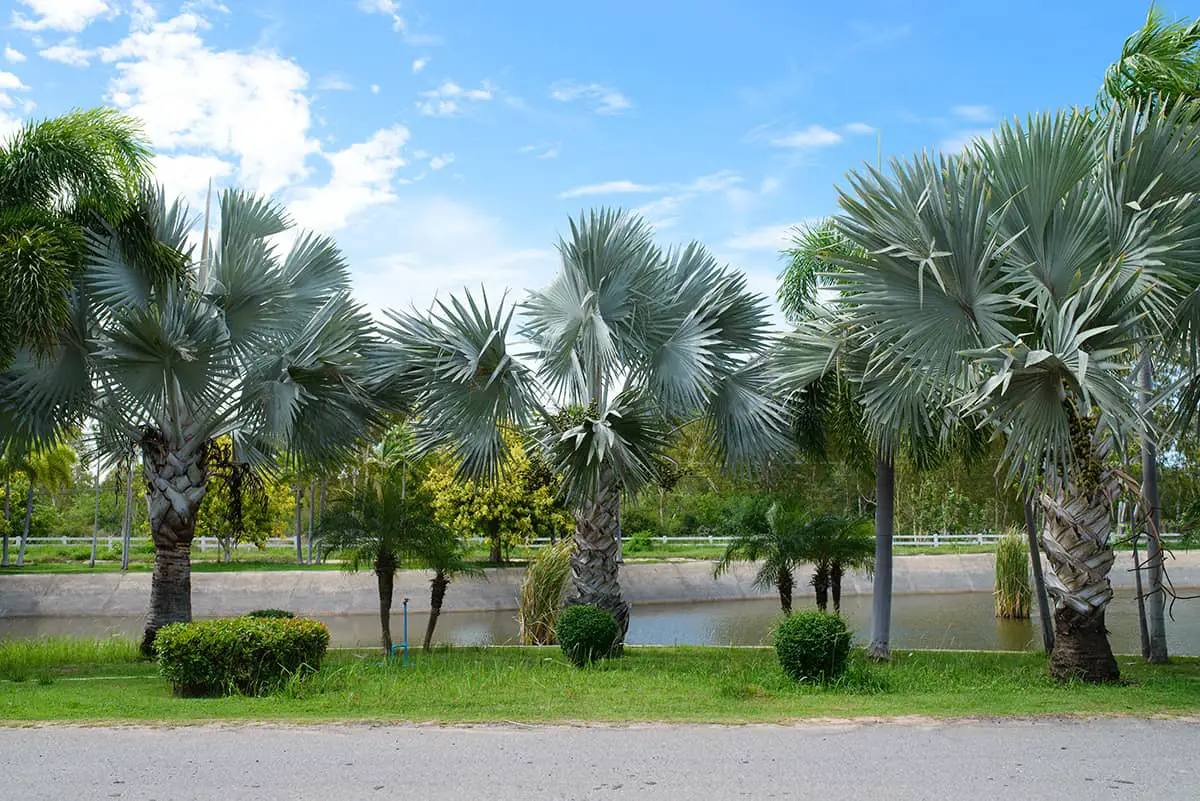
- Botanical name: Bismarckia nobilis
- Common names: Bismarck Palm
- Plant family: Arecaceae
- USDA hardiness zone: 10 – 11
- Mature height: 30 to 60 feet
- Mature spread: 15 feet
The Bismarck Palm is very slow growing when young, but once the trunk develops it will enter a stage of rapid growth which is quite remarkable to watch. This species is endemic to Madagascar, but it can also be found across Texas, Arizona, Florida, and parts of Australia and Asia.
Canary Island Date Palm
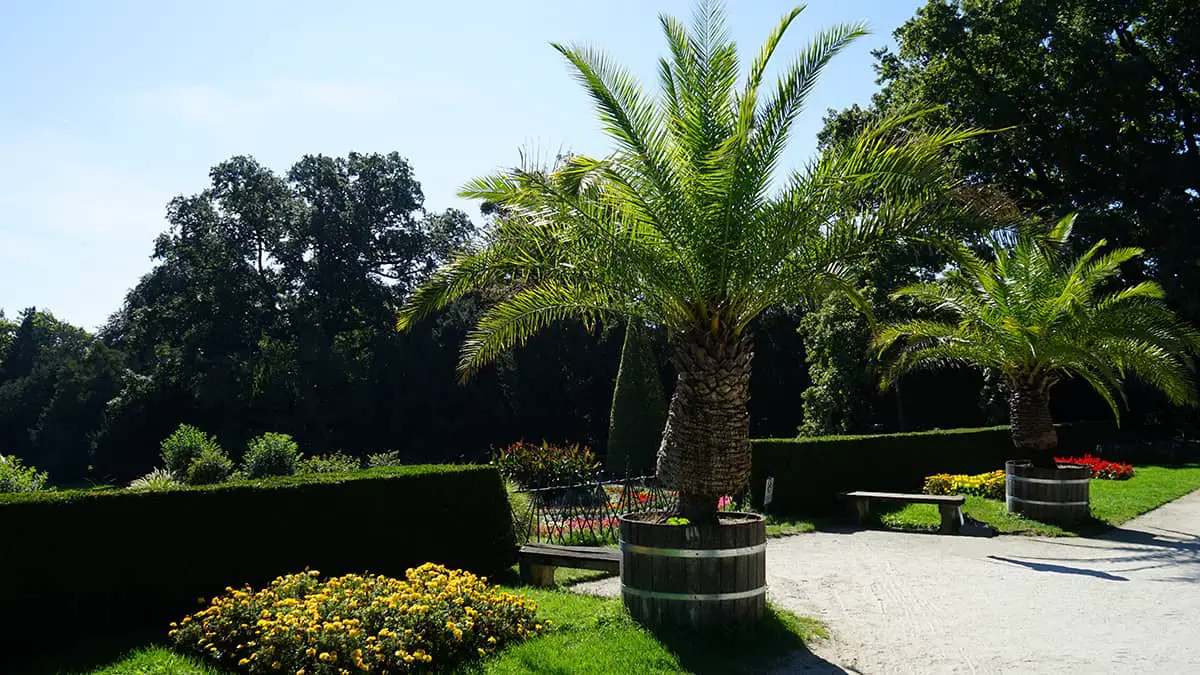
- Botanical name: Phoenix canariensis
- Common names: Canary Island Date Palm, Slender Date Palm, Pineapple Palm
- Plant family: Arecaceae
- USDA hardiness zone: 9 – 11
- Mature height: 60 feet
- Mature spread: 40 feet
At a typical height of 60 feet with a spread of 40 feet, this tree is moderately tall but takes up a lot of space in the landscape with its enormous fronds.
Paurotis Palm
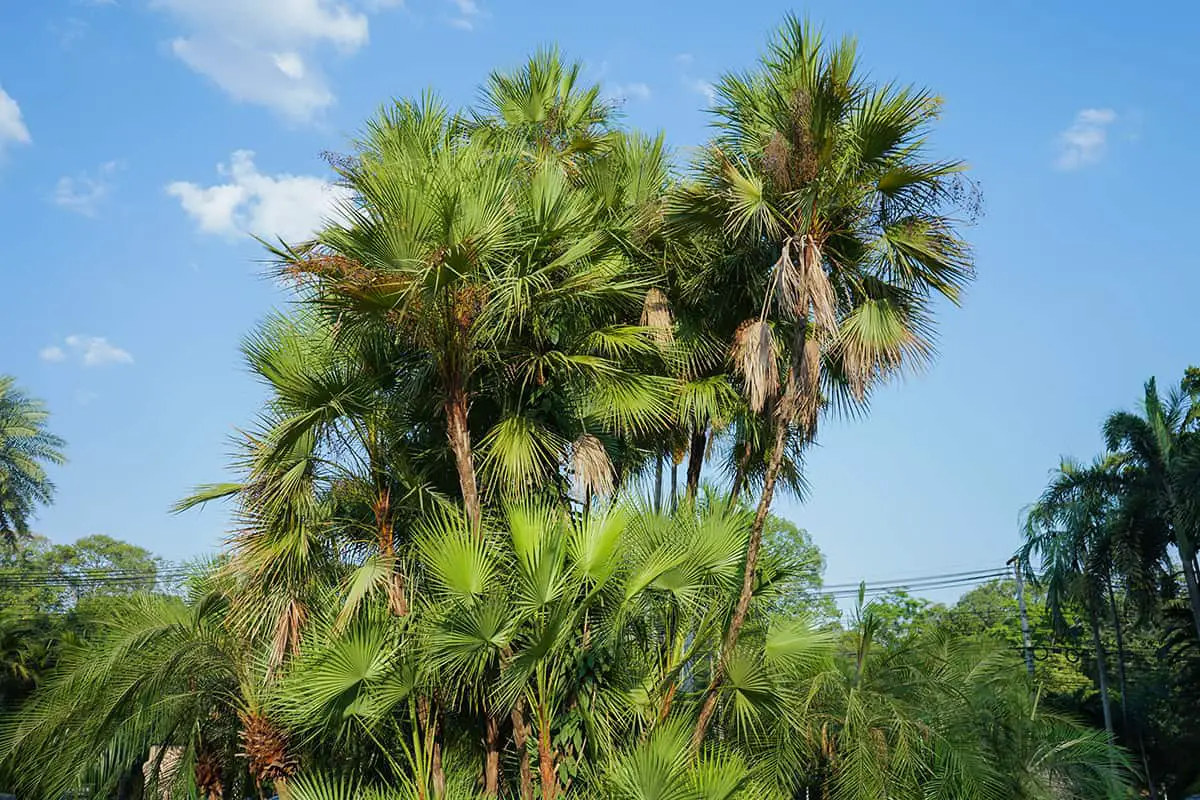
- Botanical name: Acoelorrhaphe wrightii
- Common names: Paurotis Palm, Everglades Palm, Madeira Palm
- Plant family: Arecaceae
- USDA hardiness zone: 10 – 11
- Mature height: 30 feet
- Mature spread: 25 feet
This tree is native to the Everglades region and as such, is sometimes known as the Everglade Palm. It is medium-sized at full height, growing to around 30 feet tall.
Triangle Palm
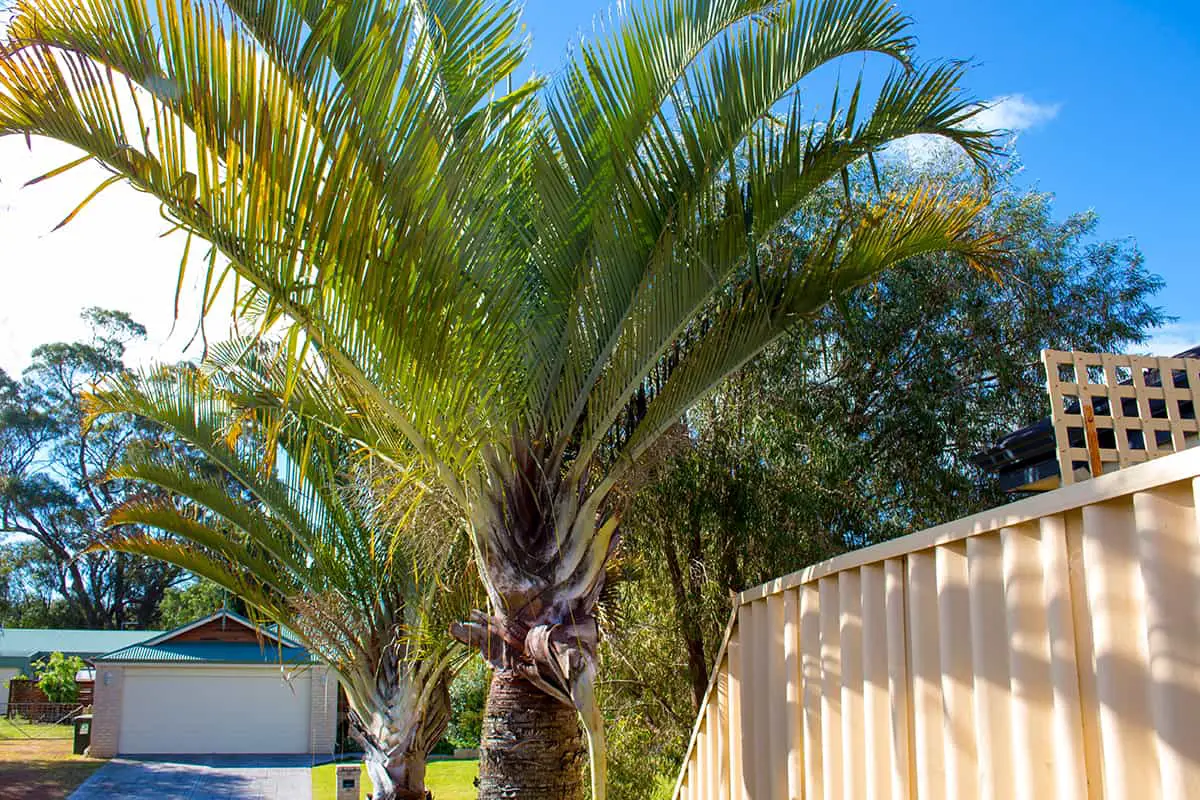
- Botanical name: Dypsis decaryi
- Common names: Triangle Palm
- Plant family: Arecaceae
- USDA hardiness zone: 10 – 13
- Mature height: 30 to 50 feet
- Mature spread: 50 feet
In its natural habitat in Madagascar, the Triangle Palm grows to around 50 feet in height. It is an endangered species within this region. However, it has been cultivated on a large scale in other temperate climates and as such, is not a broadly endangered species. When grown outside of Madagascar, the Triangle Palm will usually not exceed 30 feet tall.
Lipstick Palm
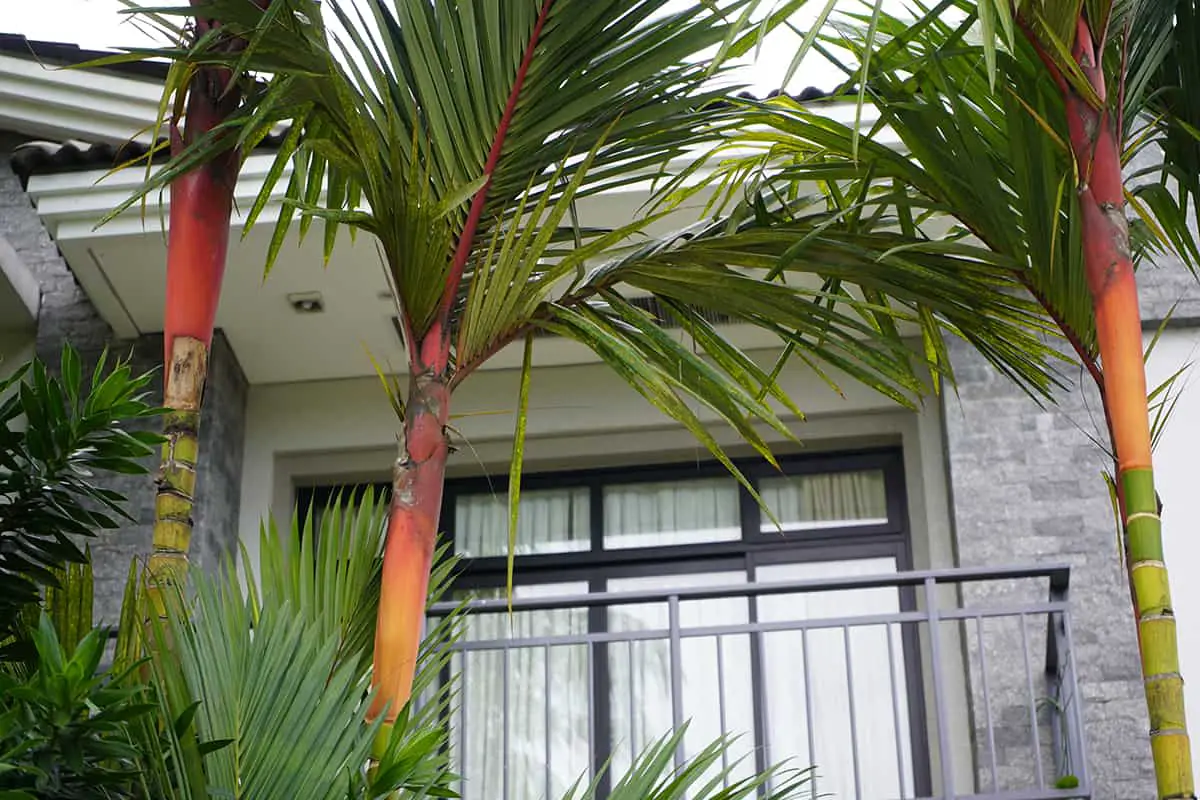
- Botanical name: Cyrtostachys renda
- Common names: Lipstick Palm, Red Sealing Wax Palm, Red Candle Wax Palm
- Plant family: Arecaceae
- USDA hardiness zone: 11 – 12
- Mature height: 35 feet
- Mature spread: 20 feet
Lipstick Palms have exquisite coloring, with lime green at the base level and shocking red nearer the top. They are medium-sized trees that are around 35 feet at mature height, though they grow slowly and therefore take many years to reach full size.
Florida Silver Palm
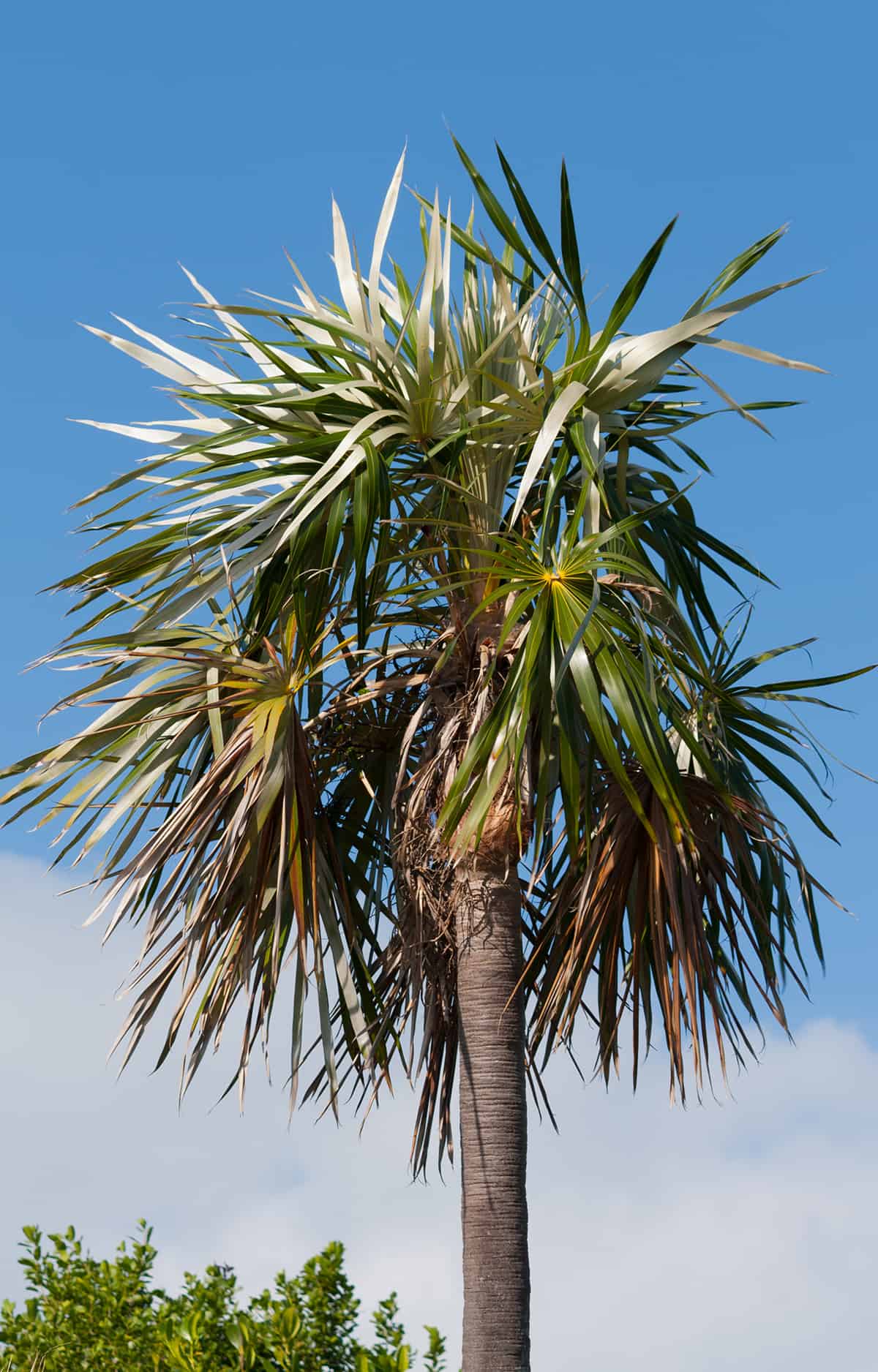
- Botanical name: Coccothrinax argentata
- Common names: Florida Silver Palm
- Plant family: Arecaceae
- USDA hardiness zone: 10 – 11
- Mature height: 20 feet
- Mature spread: 5 feet
This is a small palm that only grows around 6 inches per year, making it well-suited for life in a pot. It produces fan-shaped fronds which have silver undersides and is native to Florida, Mexico, the West Indies, the Bahamas, and Colombia.
European Fan Palm
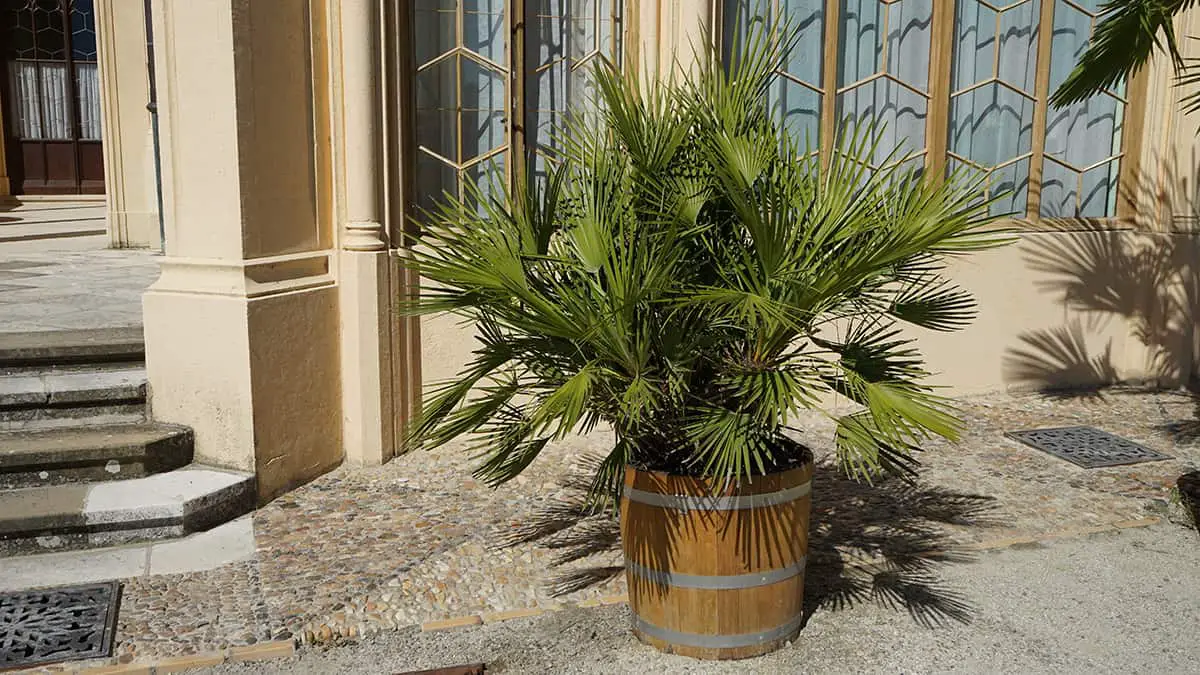
- Botanical name: Chamaerops humilis
- Common names: European Fan Palm, Dwarf Fan Palm, Mediterranean Dwarf Palm
- Plant family: Arecaceae
- USDA hardiness zone: 9 – 11
- Mature height: 15 feet
- Mature spread: 20 feet
This palm tree is small in height but reasonably large in width, with a spread of up to 20 feet. It usually grows wider than it does tall, taking up significant space in the landscape.
Needle Palm

- Botanical name: Rhapidophyllum hystrix
- Common names: Needle Palm, Porcupine Palm
- Plant family: Arecaceae
- USDA hardiness zone: 6 – 10
- Mature height: 6 feet
- Mature spread: 8 feet
At a maximum height of just six feet, the Needle Palm is one of the smallest types of palms. It is also one of the cold hardiest and is exceptionally easy to grow in a range of conditions, from wet soils to deep freezes.
World’s Tallest Palm
The Quindío wax palm is native to South America, where it is considered an endangered species. It is the national emblem of Colombia, where it grows in the Quindío coffee-growing region. These palms have a mature height of around 195 feet, making them the tallest existing species of palm in the world.
